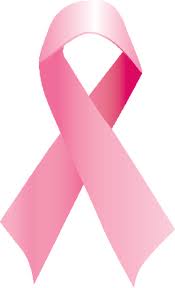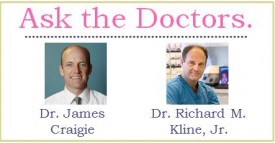 The American Cancer Society estimates that the lifetime risk of a woman developing breast cancer to be 13% in 2012—more than one in 8. Furthermore, 75% of all women with breast cancer today have no known risk factors, or anything that would potentially increase a person’s chance of developing cancer.
The American Cancer Society estimates that the lifetime risk of a woman developing breast cancer to be 13% in 2012—more than one in 8. Furthermore, 75% of all women with breast cancer today have no known risk factors, or anything that would potentially increase a person’s chance of developing cancer.
Though having a cancer risk factor, or even several of them, does not necessarily mean that a person will get cancer, it’s always a good idea to reduce risk as much as possible. Some of the factors associated with breast cancer—such as being a woman, age, and genetics—can’t be changed. Other factors, like maintaining a healthy weight, exercising, not smoking cigarettes, and eating nutritious food, are dictated by a person’s choices. By choosing the healthiest lifestyle options, you can make sure your breast cancer risk is as low as possible, and find empowerment in your good decisions.
Family History: Though you cannot change your heritage or genetics, being aware of your family’s history means you’re more inclined to protect yourself against diseases that are prevalent in your family tree. Research shows that women with close relatives who’ve been diagnosed with breast cancerhave a higher risk of developing the disease. If you’ve had one first-degree female relative (sister, mother, daughter) diagnosed with breast cancer, your risk is doubled. If two first-degree relatives have been diagnosed, your risk is 5 times higher than average. A family history of cancer of the ovaries, cervix, uterus, or colon increases your risk. Female descendants of Eastern and Central European Jews (Ashkenazi) also face increased risk. Caucasian women are at a slightly higher risk of developing breast cancer than are African-American, Asian, Hispanic, and Native American women. The exception to this is African-American women, who are more likely to have breast cancer than whites under the age of 40. If you inherited risk, you can minimize its development by making healthy lifestyle choices, such as not smoking, adhering to a nutritious diet, exercising, and abstaining from alcohol.
- Alcohol Consumption: Compared to nondrinkers, women who consume one alcoholic drink a day have a very small increase in risk, and those who have 2 to 5 drinks daily have a 15% higher risk than women who do not drink. That risk goes up another 10% for each additional drink women have regularly each day. (Note: one drink equals 12 ounces of beer, 5 ounces of wine, or 1.5 ounces of hard liquor). Research shows that alcohol of any sort can increase levels of estrogen and other hormones associated with hormone-receptor-positive breast cancer. Alcohol also may increase breast cancer risk by damaging DNA in cells. The bottom line is that regularly drinking alcohol can harm your health, even if you don’t binge drink or get drunk.
- Smoking: Smoking causes a number of diseases and is linked to a higher risk of breast cancer in younger, premenopausal women. Research also demonstrates that there may be link between very heavy second-hand smoke exposure and breast cancer risk in postmenopausal women. Smoking also can increase complications from breast cancer treatment, including damage to the lungs from radiation therapy, difficulty healing after surgery and breast reconstruction, and an increased risk of blood clots when taking hormonal therapy medicines. To reduce your risk associated with smoking, the only solution is to quit smoking [http://breastreconstructionnetwork.com/stop-smoking-series-all-about-tobacco-quitlines/] immediately.
- Diet and Nutrition: Diet is thought to be a main contributor for about 30% to 40% of all cancers. Though no food or diet can prevent you from getting breast cancer, some foods can boost your immune system and help keep your risk for breast cancer as low as possible. Getting the nutrients you need from a variety of fruits, vegetables, legumes, and whole grains can give your body the energy it needs to fight off infection and disease. Eating food grown without pesticides may also protect against unhealthy cell changes associated with pesticide use. Additionally, avoiding high-fat diets can also decrease breast cancer risk factors. Overweight women are thought to be at higher risk for breast cancer because the extra fat cells produce estrogen, which can cause extra breast cell growth and lead to the development of breast cancer.
- Exercise: Research shows that exercising regularly at a moderate or intense level for 4 to 7 hours per week can lower the risk of breast cancer. Exercise consumes and controls blood sugar and limits insulin spikes in the bloodstream—an important preventative measure considering insulin is a hormone affects how breast cells grow and behave. People who exercise regularly tend to be healthier and are more likely to maintain a healthy weight. As we mentioned earlier, extra fat produces more estrogen. When breast cells are exposed to extra estrogen over time, the risk of developing breast cancer is higher Limiting fat in your diet is necessary for good health, and it is equally important to burn extra fat cells with exercise as an additional preventative measure.
What are some ways you combat the risk of developing breast cancer?





